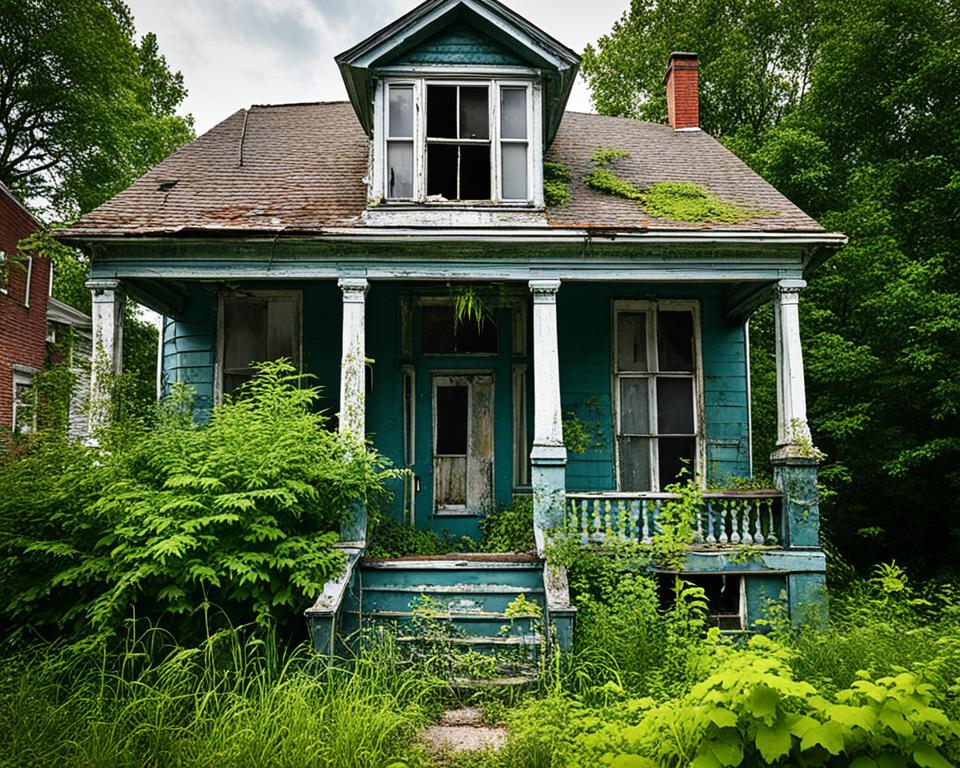In this comprehensive guide, we’ll explore the world of profitable home flipping, where savvy real estate investors transform fixer-uppers into lucrative investments. From understanding the key benefits of the fix-and-flip strategy to uncovering proven methods for maximizing profitability, this article will equip you with the knowledge and tools needed to succeed in the thriving home flipping market. Whether you’re a seasoned investor or a newcomer to the industry, this guide will provide you with the insights and strategies to turn distressed properties into rewarding financial opportunities.
The fix-and-flip strategy has become increasingly popular among real estate investors seeking to capitalize on the potential for rapid equity building and short-term investment timelines. By leveraging market appreciation and strategically renovating undervalued properties, savvy investors can transform fixer-uppers into desirable homes that command higher prices in the market.
Understanding the Profitable Home Flipping Strategy
In the dynamic world of real estate investing, profitable home flipping has emerged as a strategic approach to transforming distressed properties into lucrative investments. This section will guide you through the fundamentals of this thriving strategy, equipping you with the knowledge to navigate the fix and flip process and unlock the hidden potential within undervalued properties.
What is House Flipping?
House flipping, also known as residential flipping, involves the acquisition, renovation, and subsequent resale of a property for a profit. Savvy real estate investors identify distressed properties with untapped potential, meticulously renovate them, and then sell the revitalized homes at a higher market value, capturing the difference as their return on investment.
Key Benefits of Real Estate Flipping
The house flipping business offers a range of compelling benefits for real estate investors. These include the potential for rapid equity building, the ability to capitalize on short-term investment timelines, and the opportunity to leverage market appreciation to maximize profits. By understanding these key advantages, investors can make well-informed decisions and optimize their real estate investing strategies.
Assessing Potential Profitability
Evaluating the potential profitability of a fix-and-flip project is a critical step in the home flipping process. Investors must carefully analyze factors such as the property’s condition, the estimated renovation costs, and the projected sale price to ensure a profitable outcome. By conducting thorough due diligence and accurately forecasting the financial performance of a short-term real estate investment, investors can make informed decisions and minimize the risks associated with property renovation.
Finding the Right Distressed Properties
As a successful real estate investor in the profitable home flipping market, identifying the right distressed properties is a crucial first step. By honing in on undervalued fixer-upper opportunities that hold significant potential for value appreciation, you can lay the foundation for a lucrative fix and flip strategy.
Identifying Undervalued Fixer-Uppers
The key to finding the ideal distressed properties for your residential flipping ventures lies in your ability to spot undervalued fixer-upper homes. Utilize a combination of market research, industry insights, and on-the-ground exploration to identify neighborhoods and properties with untapped potential. Seek out homes that may have fallen into disrepair or been neglected, as these often present the greatest opportunities for value-adding renovations and substantial equity building.
Analyzing Property Conditions and Renovation Costs
Once you’ve identified a promising distressed property, it’s essential to conduct a thorough analysis of the property’s condition and accurately estimate the renovation costs. This step is crucial in determining the overall profitability of the fix and flip project. Carefully inspect the property, consulting with experienced contractors and professionals, to assess the extent of necessary repairs and upgrades. By understanding the true costs associated with transforming the fixer-upper into a desirable, move-in-ready home, you can make informed decisions and ensure a successful house flipping business venture.
| Key Factors in Identifying Distressed Properties | Recommended Strategies |
|---|---|
| Undervalued Neighborhoods | Conduct comprehensive market research to pinpoint areas with high potential for real estate appreciation and lower-than-average home prices. |
| Neglected or Abandoned Homes | Actively search for properties that have fallen into disrepair or been neglected by previous owners, as these often present the greatest opportunities for profitable home flipping. |
| Accurate Cost Estimation | Collaborate with experienced contractors, inspectors, and real estate professionals to thoroughly assess the property’s condition and precisely estimate the renovation costs. |

Profitable Home Flipping: A Step-by-Step Guide
Embarking on a successful home flipping journey requires a strategic approach, from acquiring the property at a favorable price to executing a seamless renovation and implementing effective marketing and selling strategies. In this comprehensive section, we’ll guide you through the essential steps to transform distressed properties into lucrative investments.
Acquiring the Property at a Favorable Price
The key to profitable home flipping lies in your ability to acquire the property at a price that sets the stage for a substantial return on investment. Leverage your negotiation skills and explore creative financing options to secure the Profitable Home Flipping deal. Scour the market for undervalued Distressed Properties, and work closely with real estate agents and other industry professionals to identify the best opportunities.
Renovating for Maximum Value Addition
Once you’ve secured the property, the real magic begins with the renovation process. Approach this phase with a keen eye for cost-effective upgrades that will deliver high returns on your investment. Carefully analyze the property’s condition and prioritize Property Renovation projects that align with current Design Trends and Buyer Preferences. Leverage the expertise of skilled contractors and designers to transform the fixer-upper into a showpiece that will captivate potential buyers.
Effective Marketing and Selling Strategies
The final step in the profitable home flipping journey is executing a strategic marketing and selling plan. Leverage the power of online platforms, professional photography, and targeted advertising to showcase the renovated property and attract a pool of qualified Residential Flipping buyers. Collaborate with experienced real estate agents to ensure a timely and lucrative sale, maximizing your Equity Building and Real Estate Appreciation.
By following this comprehensive step-by-step guide, you’ll be well on your way to executing a successful House Flipping Business and reaping the rewards of profitable Real Estate Investing through the art of fix-and-flip.
Building a Successful House Flipping Business
Embarking on a profitable home flipping journey requires more than just identifying the right properties and executing effective renovations. To truly thrive in this dynamic industry, it’s essential to build a successful house flipping business that can withstand the challenges and capitalize on the opportunities presented in the real estate market.
Assembling an Experienced Team
One of the key pillars of a successful house flipping business is the assembly of an experienced team of professionals. This includes partnering with real estate agents who possess an intimate understanding of the local market, skilled contractors capable of delivering quality renovations within budget, and financial advisors who can provide guidance on various financing options and risk management strategies. By leveraging the expertise of these specialized individuals, you can streamline the flipping process, minimize costly mistakes, and maximize your profitability.
Financing Options for Real Estate Investors
Access to capital is a critical component of the Profitable Home Flipping and Real Estate Investing landscape. Savvy house flippers explore a range of financing options, including traditional mortgages, hard money loans, private lenders, and creative financing techniques like wholesaling and lease-option agreements. Each financing avenue offers unique advantages and drawbacks, so it’s essential to carefully evaluate your financial needs, project timelines, and risk tolerance to identify the most suitable solution for your Fix and Flip Strategy.
Risk Management and Exit Strategies
In the world of Residential Flipping and House Flipping Business, effective risk management and well-crafted exit strategies are paramount to long-term success. Proactive house flippers establish contingency plans to navigate unexpected challenges, such as cost overruns, market fluctuations, and unforeseen delays. Additionally, they meticulously plan their exit strategies, which may involve wholesale selling, retail listing, or even transitioning a property into a Short-Term Real Estate Investment or Rental Property. By anticipating and addressing potential risks, you can strengthen the resilience of your Equity Building and Real Estate Appreciation efforts.
| Financing Option | Advantages | Disadvantages |
|---|---|---|
| Traditional Mortgage | Lower interest rates, longer repayment terms | Stricter qualification criteria, slower approval process |
| Hard Money Loans | Faster approval, more flexible criteria | Higher interest rates, shorter repayment periods |
| Private Lenders | Customized loan terms, potential for personal relationships | May require more extensive due diligence |
| Wholesale/Lease-Option | Minimal upfront capital, potential for cash flow | Increased complexity, potential legal considerations |
The Art of Property Renovation
Successful home flipping ventures hinge on the strategic renovation of distressed properties. In this section, we’ll delve into the art of property renovation, exploring cost-effective upgrades that deliver high returns on investment and examining the latest design trends that appeal to discerning buyers.
Cost-Effective Upgrades with High Returns
When it comes to profitable home flipping, the key is to identify renovation projects that maximize value addition while minimizing costs. By focusing on strategic, high-impact upgrades, you can transform fixer-uppers into move-in ready properties that command top dollar in the market.
One such example is updating the kitchen. A modern, well-designed kitchen can significantly boost a home’s perceived value and appeal to potential buyers. Simple yet effective upgrades like replacing outdated appliances, refacing cabinets, and installing new countertops can provide an excellent return on investment. Similarly, refreshing bathrooms with new fixtures, tile, and vanities can be a cost-effective way to enhance the overall appeal of the property.
Enhancing curb appeal is another crucial aspect of profitable real estate flipping. Exterior upgrades such as landscaping, painting the front facade, and upgrading the front door can create a lasting first impression that captivates buyers and maximizes the property’s value.
Design Trends and Buyer Preferences
In the world of residential flipping, understanding and catering to the evolving design preferences of homebuyers is essential for maximizing profitability. By staying abreast of the latest design trends, you can ensure that your renovations align with the expectations of your target market and resonate with potential buyers.
For instance, open-concept floor plans, abundant natural light, and clean, contemporary aesthetics have become increasingly sought-after in recent years. By incorporating these design elements into your renovation projects, you can create homes that cater to the preferences of today’s discerning buyers, ultimately driving up the property’s value and appeal.
Additionally, paying attention to sustainable and energy-efficient features, such as energy-efficient appliances, smart home technology, and eco-friendly materials, can further enhance the marketability of your flipped properties. These upgrades not only appeal to environmentally conscious buyers but also contribute to long-term cost savings, making the homes more attractive investments.

By balancing cost-effective renovations with the latest design trends and buyer preferences, real estate investors can unlock the full potential of their house flipping business and maximize their profits in the short-term real estate investment market.
Maximizing Equity and Appreciation
As a savvy real estate investor in the profitable home flipping market, understanding how to maximize equity and appreciation is key to your long-term success. By leveraging market dynamics and timing the sale of your renovated property with precision, you can unlock substantial financial rewards.
Leveraging Market Dynamics
To capitalize on the full potential of your fix and flip strategy, it’s essential to closely analyze local real estate trends and identify undervalued neighborhoods with strong growth potential. By carefully studying market data, you can pinpoint areas where property values are poised for significant appreciation, allowing you to target the most lucrative investment opportunities.
Moreover, paying close attention to factors such as infrastructure developments, demographic shifts, and economic indicators can provide valuable insights into the future trajectory of a particular market. Armed with this knowledge, you can strategically acquire distressed properties in up-and-coming neighborhoods, maximizing your chances of substantial equity building through your residential flipping endeavors.
Timing the Sale for Optimal Profits
Equally crucial to your success is the timing of the sale for your renovated property. By closely monitoring market conditions, you can identify the most favorable windows to list your home and ensure the highest possible return on your real estate investment.
Factors such as seasonal trends, buyer demand, and the property’s increased value after your property renovation all play a role in determining the optimal time to sell. By meticulously tracking these variables and aligning your sale strategy accordingly, you can maximize your profits and solidify your position as a successful house flipping entrepreneur.
Real-Life Success Stories and Expert Insights
As we wrap up our exploration of profitable home flipping, we’re excited to share the inspiring stories of seasoned real estate investors who have achieved remarkable success in the fix and flip strategy. These case studies not only highlight the potential rewards of real estate investing, but also provide valuable insights and practical advice from industry experts that can guide you on your own house flipping journey.
Meet Sarah Thompson, a former corporate executive who dove into the world of residential flipping and has since built a thriving house flipping business. Sarah’s keen eye for undervalued distressed properties and strategic approach to property renovation have allowed her to consistently generate substantial equity building and real estate appreciation in her short-term investments. “The key,” Sarah shares, “is to really understand the local market dynamics and identify those hidden gems that offer the greatest potential for value addition.”
Another success story comes from Mike Hernandez, a seasoned real estate investor who has mastered the art of timing the sale of his flipped properties. “By closely monitoring market trends and anticipating buyer preferences, I’ve been able to maximize my profits and minimize the holding period for each project,” Mike explains. His approach to risk management












